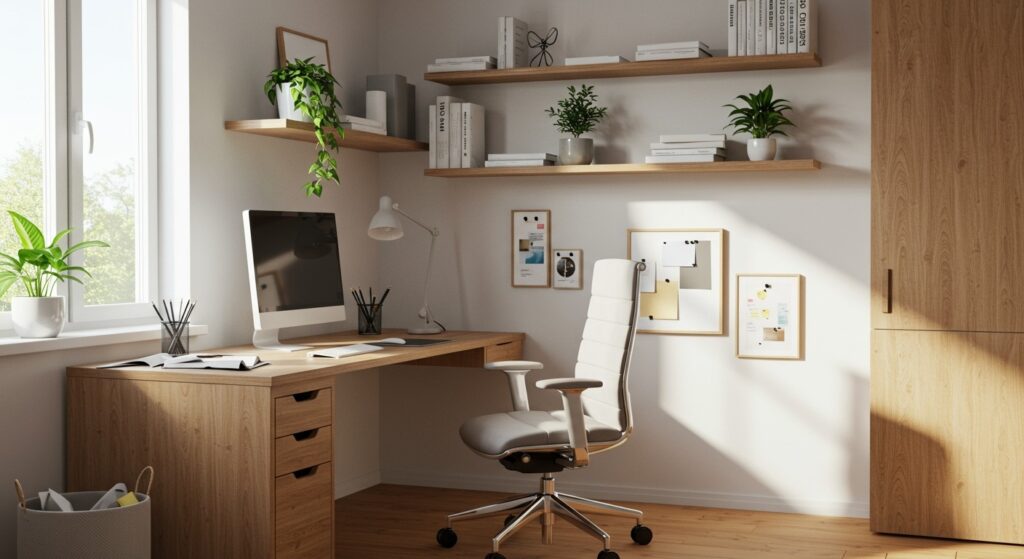Your home office should feel like a place where ideas flow freely, not a corner where you count down the hours. If your current workspace leaves you feeling cramped, distracted, or just uninspired, you’re not alone. Many people are realizing that the environment they work in directly impacts how they feel and perform throughout the day.
A thoughtful home office remodel doesn’t require knocking down walls or spending thousands of dollars. Sometimes it’s about rethinking the layout, improving the lighting, or finally investing in that chair that doesn’t leave your back aching. The goal is creating a space that supports both your productivity and your comfort, which honestly matters more than most of us admit.
Whether you’re working with a spare bedroom, a closet nook, or a corner of your living room, these ideas will help you transform your workspace into somewhere you genuinely enjoy spending time. Let’s explore how small changes can make a surprisingly big difference in how you work from home.
1. Start With Smart Layout Planning
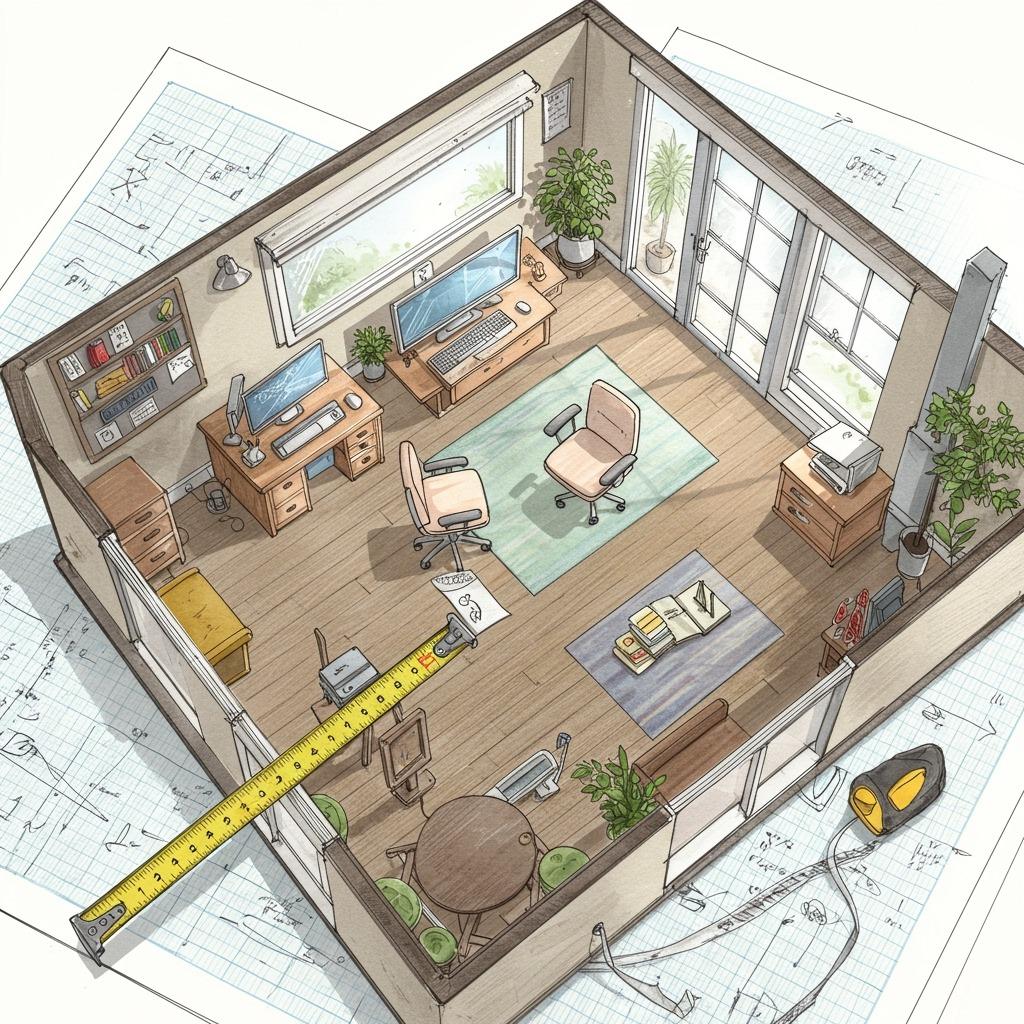
Before you buy a single piece of furniture or paint a wall, think about how you actually use your space. Do you take a lot of video calls? You’ll want to position your desk so there’s something pleasant behind you, not a messy closet or blank wall. Do you reference physical documents often? Then surface space and accessible storage become priorities.
Natural light can make or break a workspace. If possible, position your desk perpendicular to a window rather than directly facing it. This gives you the mood-boosting benefits of daylight without the glare on your screen that makes you squint all afternoon. I’ve noticed that when my desk faces a window, I spend more time staring outside than focusing on work, which isn’t always a bad thing but doesn’t help deadlines.
Think about traffic flow too, especially if others share your home. Placing your desk away from the main path through the room helps minimize distractions. If you’re working with a small space renovation, consider how you can make the area feel defined without completely closing it off.
2. Invest in Proper Lighting Layers
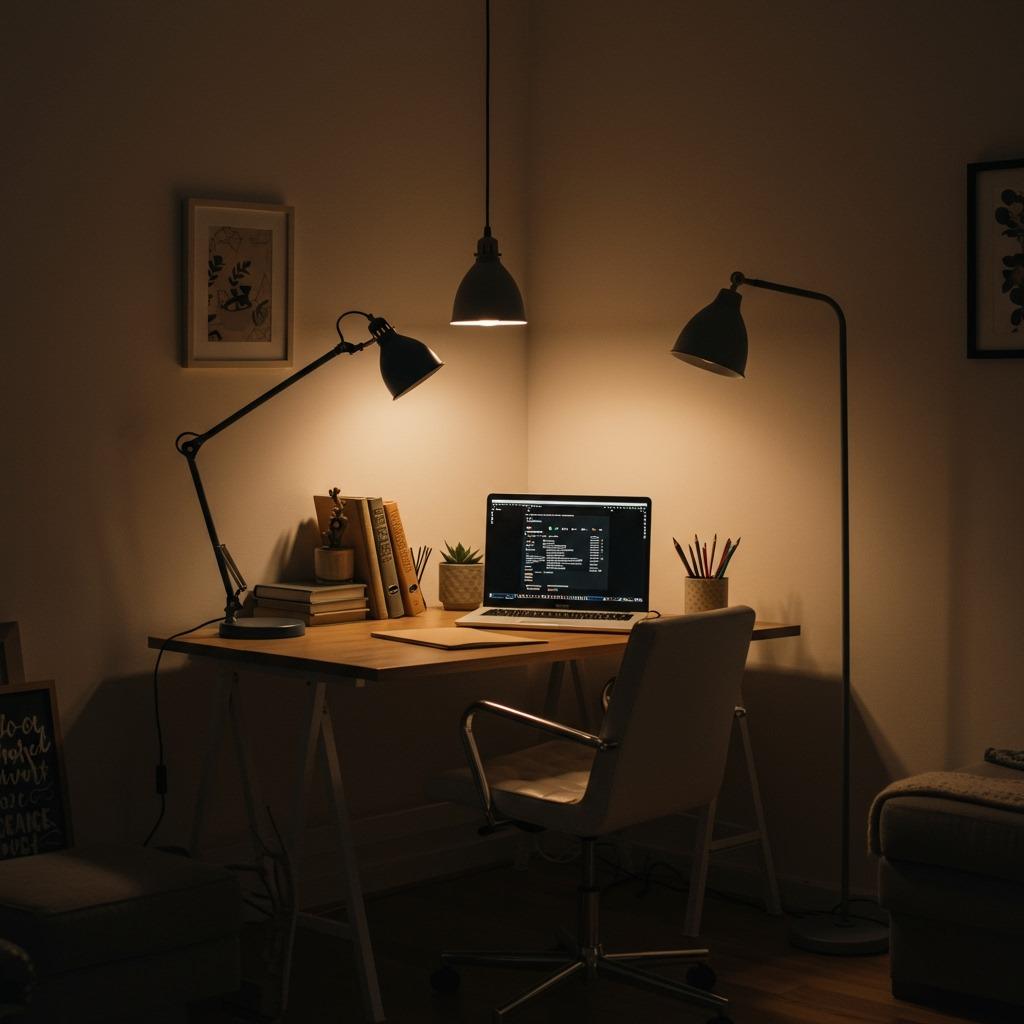
Overhead lighting alone isn’t enough for a functional workspace. You need layers: ambient lighting for overall brightness, task lighting for focused work, and maybe even accent lighting to create warmth. Those headaches you get after a long workday? Poor lighting might be the culprit.
A good desk lamp with adjustable brightness is non-negotiable. Look for one with a flexible arm so you can direct light exactly where you need it. LED bulbs in the 4000K to 5000K range mimic natural daylight and help you stay alert without feeling harsh. For ambient lighting, consider a dimmer switch so you can adjust the mood based on the time of day or type of work you’re doing.
Don’t forget about reducing screen glare. Position lights to the side of your monitor rather than behind or directly in front of it. If you’re dealing with limited natural light, a quality daylight lamp can make your space feel more open and energizing, even on gray days.
3. Choose Ergonomic Furniture That Actually Supports You
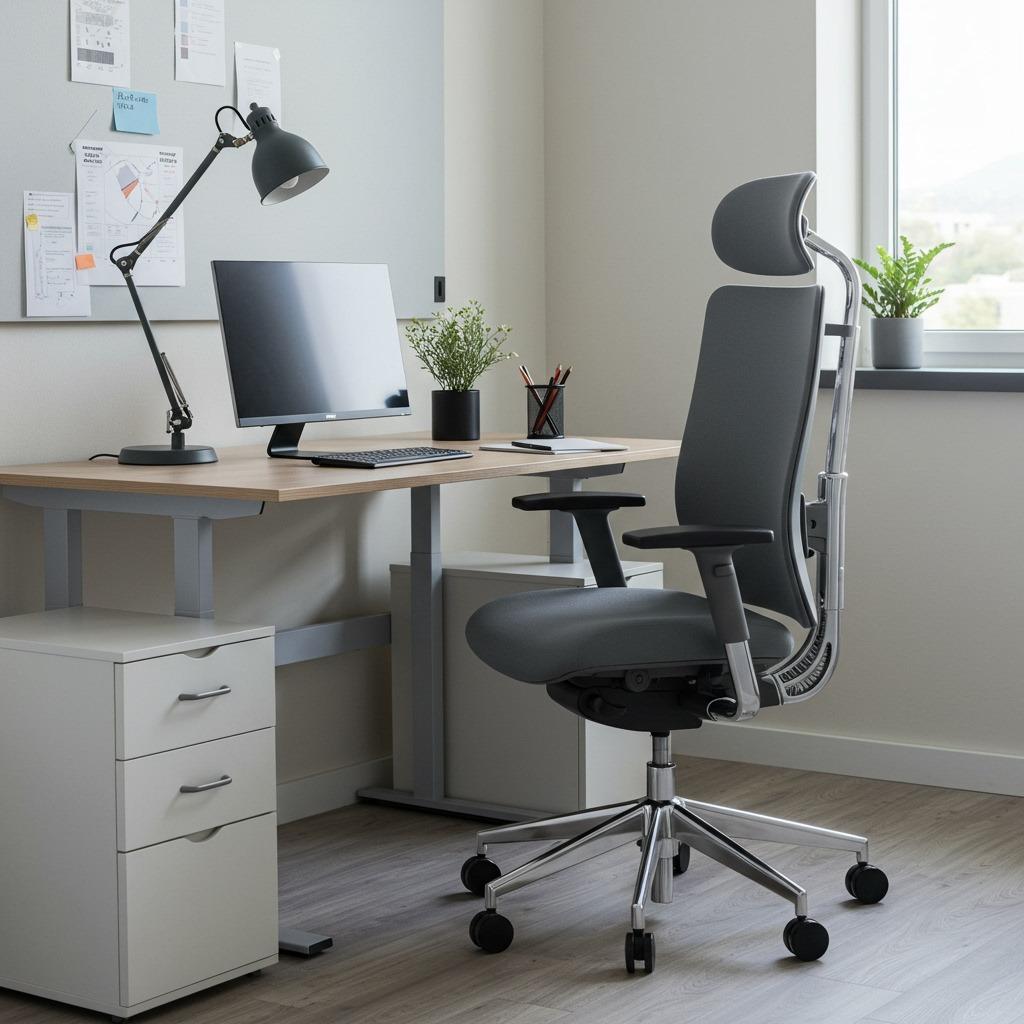
You spend hours in your office chair, so treating it like an afterthought is doing yourself a disservice. A proper ergonomic chair supports your lower back, keeps your feet flat on the floor, and allows your arms to rest at a 90-degree angle while typing. Yes, good chairs cost more upfront, but compare that to chiropractor bills or the nagging discomfort that makes focusing difficult.
Your desk height matters just as much as your chair. Your elbows should bend at roughly 90 degrees when your hands rest on the keyboard. If your desk is too high or too low, you’ll end up with shoulder tension and wrist strain. Adjustable-height desks have become more affordable and give you the flexibility to alternate between sitting and standing throughout the day.
Consider a footrest if your feet don’t comfortably reach the floor, and a monitor stand or arm to position your screen at eye level. These seem like small details, but they add up to a workspace that supports your body rather than fighting against it. When planning your home improvement ideas, ergonomics should be a top consideration.
4. Create Storage That Reduces Visual Clutter
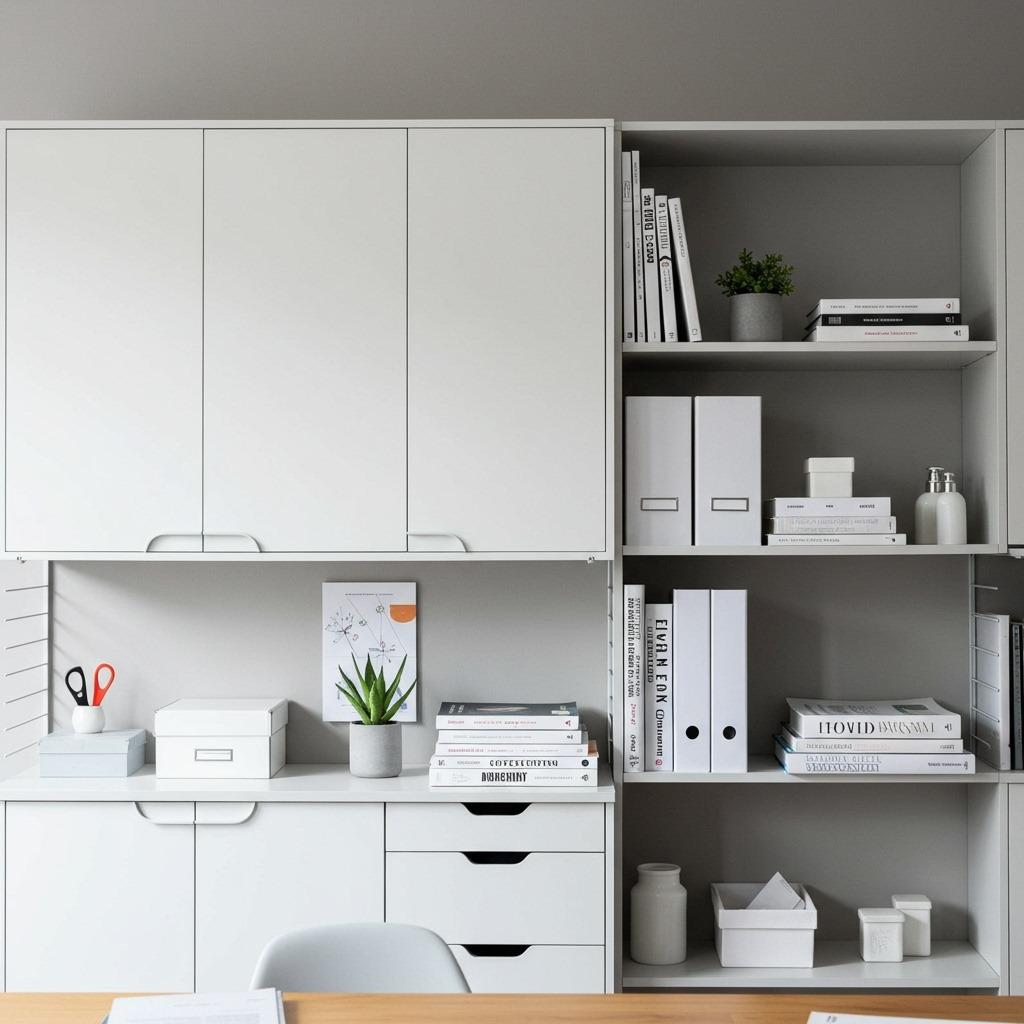
Clutter isn’t just an aesthetic issue; it genuinely affects your ability to concentrate. When your workspace is overflowing with papers, supplies, and random items, your brain gets distracted trying to process all that visual information. Smart storage solutions help you maintain a clearer mind by keeping only what you need within view.
Vertical storage is your friend, especially in smaller offices. Floating shelves, wall-mounted organizers, and pegboards make use of space that would otherwise go to waste. Keep frequently used items within arm’s reach and store everything else in closed cabinets or drawers. This “out of sight, out of mind” approach helps you maintain focus on actual work instead of the pile of stuff accumulating in the corner.
Cable management deserves its own mention because tangled cords are both unsightly and frustrating. Use cable clips, sleeves, or a simple cable box to corral those wires. A tidy workspace just feels better to work in, and you’ll spend less time untangling chargers when you actually need them.
5. Select Colors That Influence Your Mood
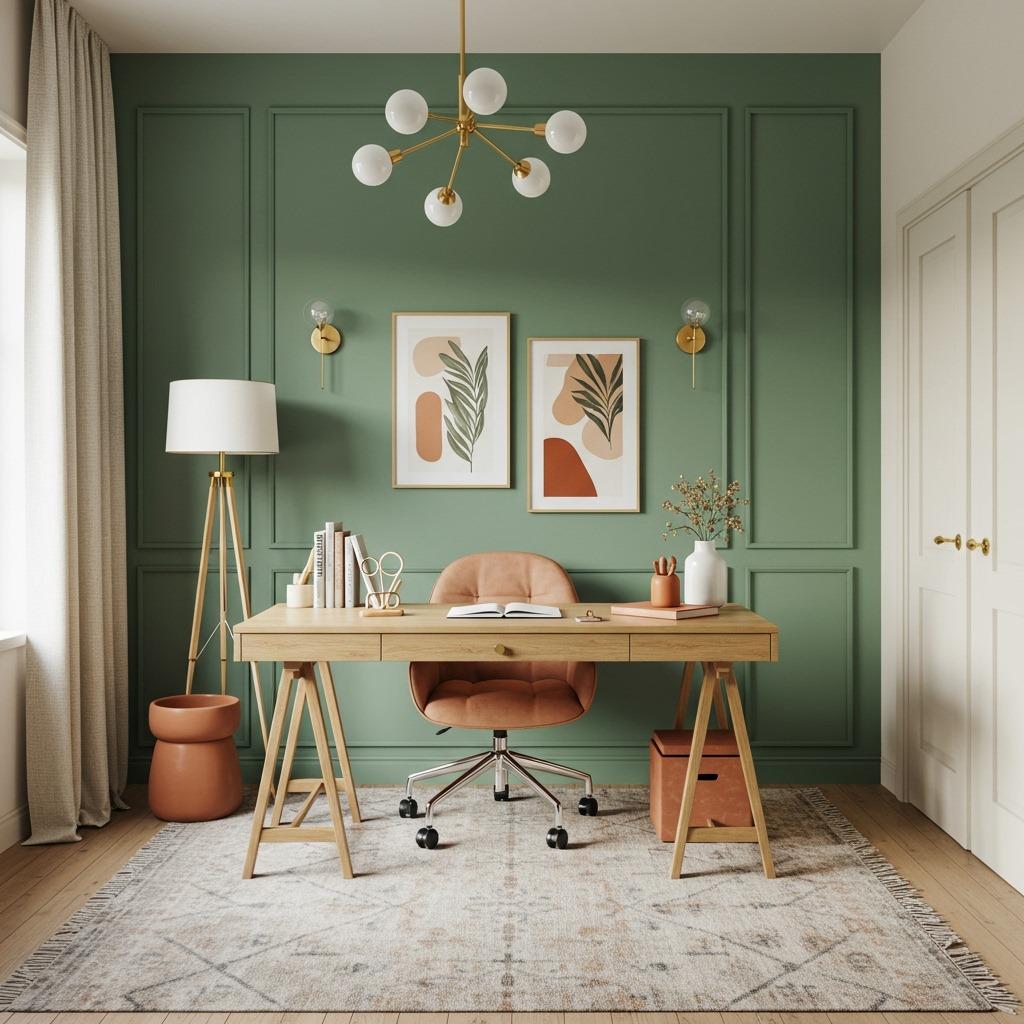
Color psychology isn’t just marketing fluff; the hues surrounding you genuinely impact how you feel and work. Blues and greens tend to promote calmness and focus, making them popular choices for productive environments. Warmer tones like soft yellows or earthy terracottas can boost creativity and energy, though too much can feel overwhelming.
You don’t need to repaint entire rooms if that feels like too much commitment. An accent wall behind your desk creates a focal point without dominating the space. Or start smaller with colored accessories, artwork, or even a vibrant desk mat. The goal is finding a balance that energizes you without becoming visually exhausting after hours of staring at it.
Neutral bases with colorful accents give you flexibility to change things up without major renovations. A mostly white or gray office can feel fresh and clean, while pops of your favorite colors through textiles, organizers, or wall art keep it from feeling sterile. What works depends on your personal preferences and how color affects your particular mood. For more color inspiration, check out these colorful minimalist bedroom ideas that translate well to office spaces.
6. Incorporate Natural Elements for Wellness
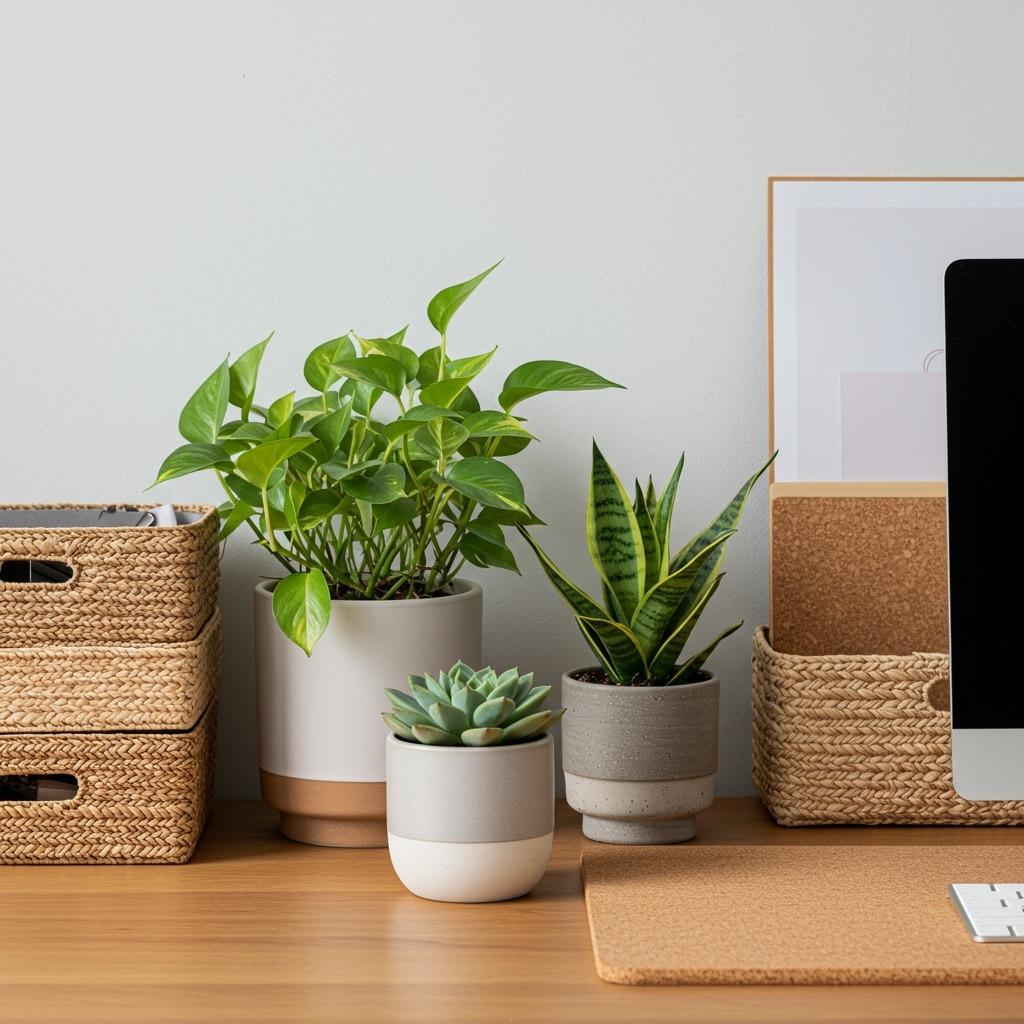
Bringing nature indoors isn’t just trendy; it’s backed by research showing plants improve air quality and reduce stress. You don’t need a green thumb to benefit from this. Start with low-maintenance options like pothos, snake plants, or succulents that forgive the occasional forgotten watering.
Natural materials extend beyond plants. Wooden furniture, woven baskets, linen curtains, and stone accessories create a calming, organic feel that artificial materials can’t quite replicate. There’s something grounding about working at a solid wood desk compared to a plastic laminate one, even if you can’t quite put your finger on why.
Natural textures also add visual interest without creating clutter. A jute rug, bamboo organizers, or even a simple wooden picture frame bring warmth and dimension to your space. If you’re interested in more ways to incorporate greenery, indoor garden living room concepts can inspire creative plant displays for your office.
7. Define Your Space With Intentional Boundaries
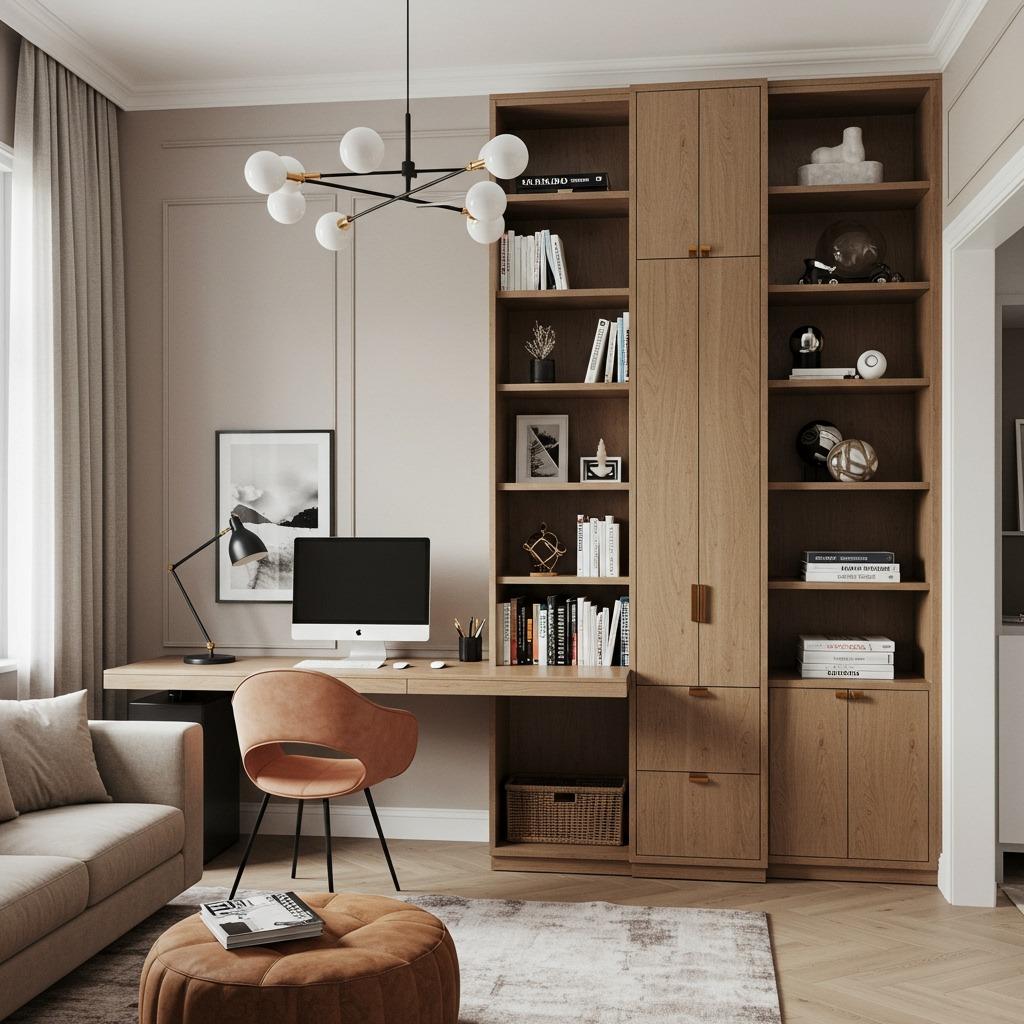
When your office shares space with your bedroom or living room, creating psychological boundaries becomes important. You need a way to mentally “leave work” at the end of the day, even if you’re only walking a few feet away. Physical dividers help establish this separation without requiring actual walls.
Bookcases, folding screens, or even a strategically placed large plant can define your office zone. Area rugs are surprisingly effective at creating distinct spaces within a room. When you step off the rug, you’ve mentally left the office. These subtle boundaries help maintain work-life balance, which sounds cliché but becomes really important when your commute is fifteen seconds.
If building actual divisions isn’t possible, consider how furniture placement creates implied boundaries. Positioning your desk to face away from the rest of the room helps you focus during work hours and makes it easier to ignore the space when you’re off the clock.
8. Upgrade Your Technology Setup Thoughtfully
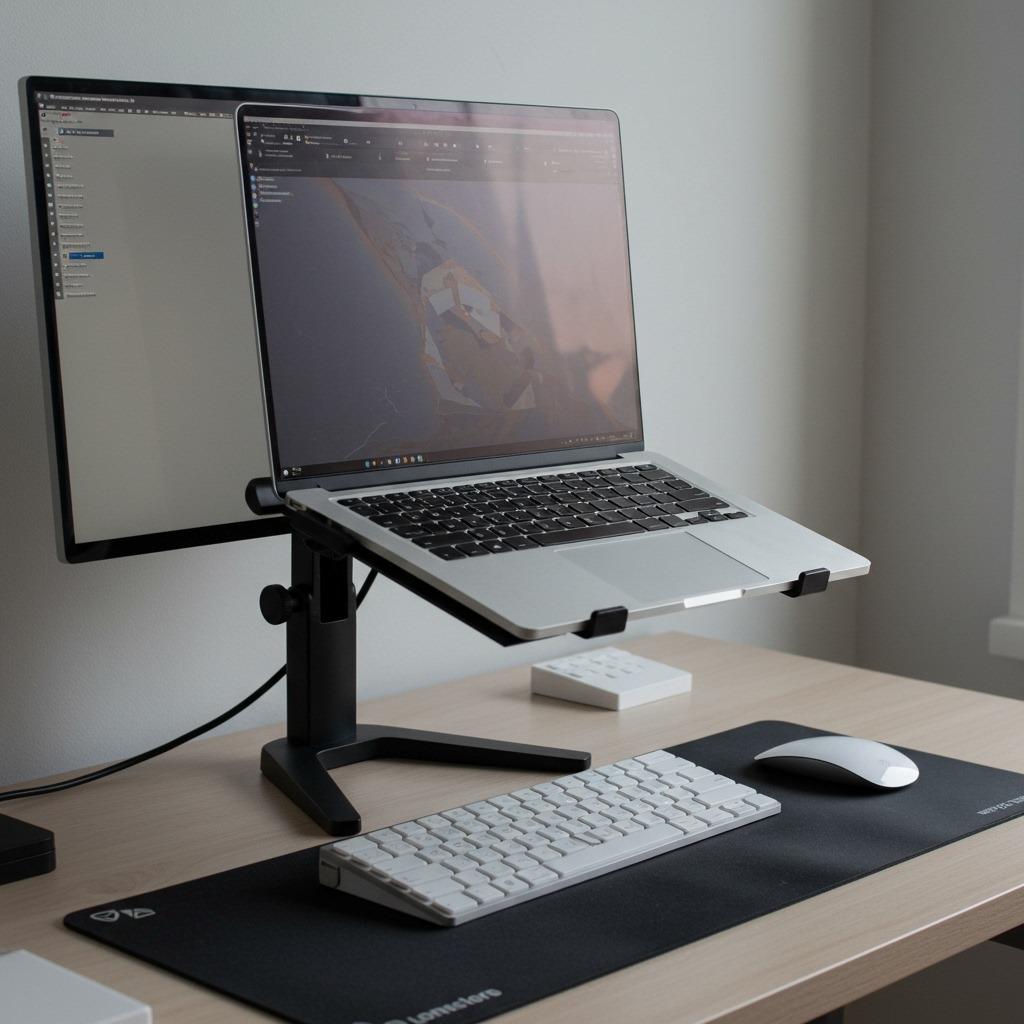
Your technology should support your work, not complicate it. If you’re squinting at a laptop screen for eight hours daily, an external monitor might be one of the best investments you make. Position it at eye level to avoid neck strain, and if you use both a laptop and monitor, ensure they’re at similar heights so you’re not constantly looking up and down.
Quality audio matters more than people realize, especially if you’re on frequent calls. A decent USB microphone or even just a good headset makes you sound more professional and reduces fatigue from straining to hear or be heard. Your colleagues will appreciate it too, even if they don’t explicitly mention it.
Consider a laptop stand or a second monitor arm to maximize desk space. When your technology is properly organized and positioned, you can focus on actual work instead of fighting with your setup. And yes, keeping your software and security updated falls under this category too, boring as it sounds.
9. Personalize Without Overcrowding
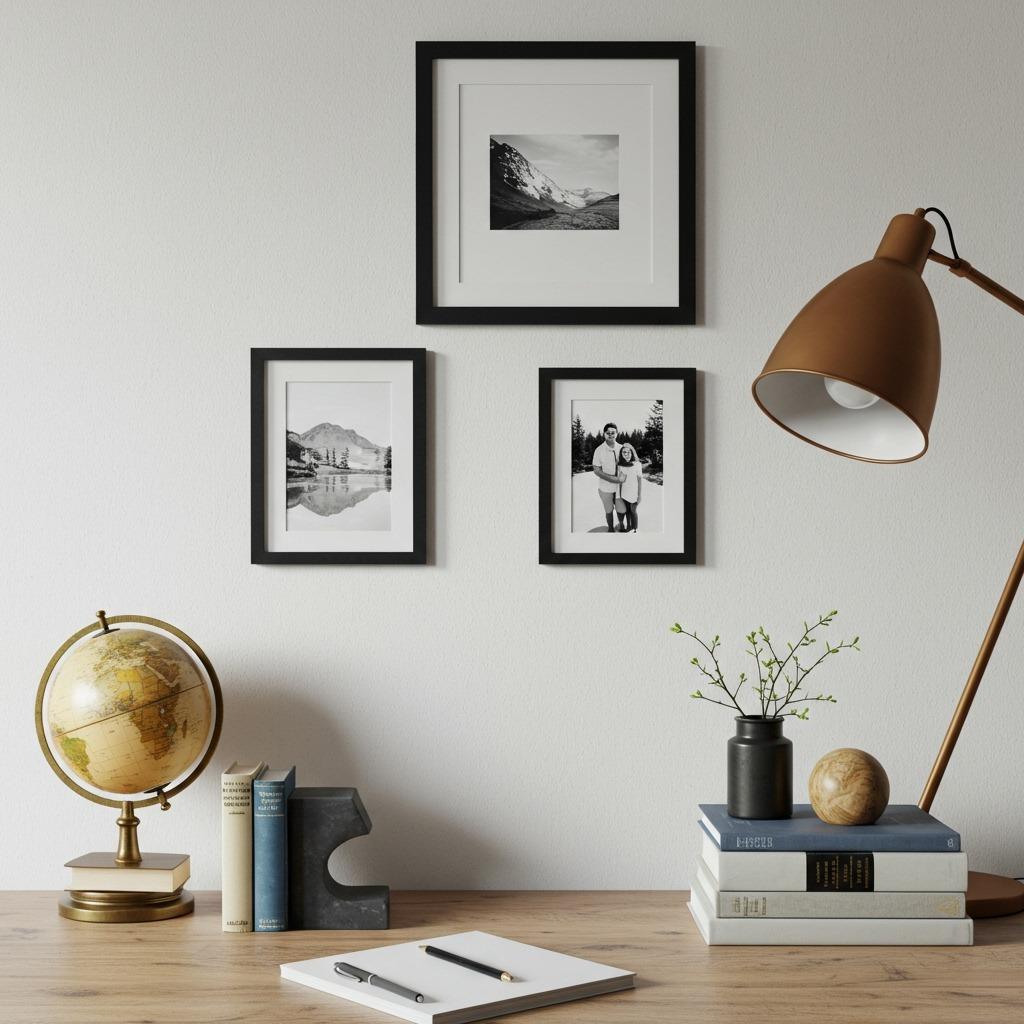
Your office should reflect who you are, but there’s a balance between personal touches and turning your desk into a cluttered shrine. A few meaningful items, photos, or pieces of art make the space feel like yours without overwhelming it. Think quality over quantity.
Choose decorations that genuinely inspire or comfort you rather than filling space because it looks empty. One piece of art you love beats five mediocre prints you grabbed because the wall felt bare. The same goes for motivational quotes; if they actually resonate with you, great. If they’re just generic phrases that everyone has, they fade into background noise.
Personal touches might include items related to hobbies, a nice candle for breaks, or even just your favorite mug for coffee. These small elements make working from home feel less isolating and more like a space that belongs to you. Just remember that every item you add is something else competing for your attention.
10. Consider Acoustic Improvement
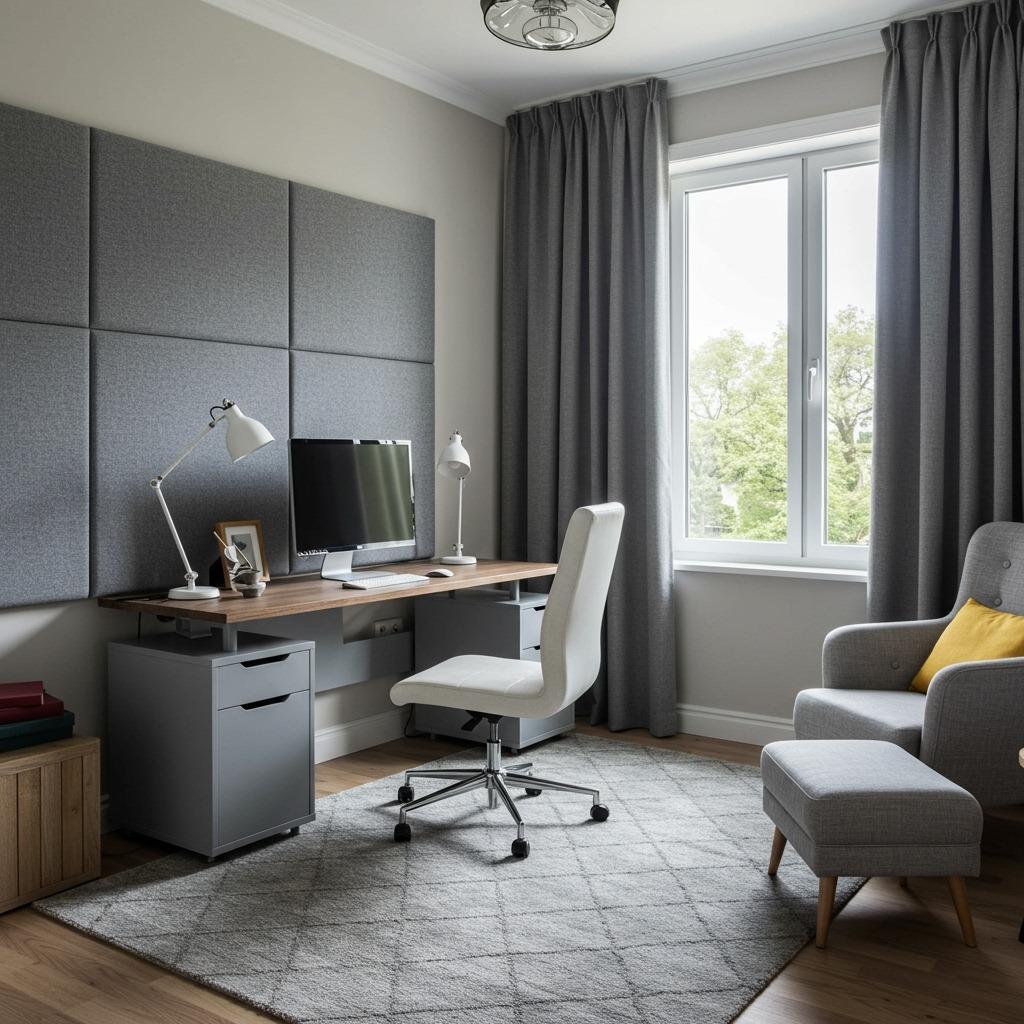
Sound often gets overlooked in home office planning, but it impacts concentration more than you might expect. Hard surfaces like wood floors, glass windows, and bare walls create echo and amplify noise. If you’ve ever felt exhausted after a long workday despite sitting all day, ambient noise might be partly to blame.
Soft furnishings absorb sound naturally. Area rugs, curtains, upholstered furniture, and even wall hangings all help dampen echo and create a quieter environment. If you work from home in a busy household, these additions make it easier to focus despite activity happening around you.
For more serious sound control, acoustic panels aren’t as expensive or complicated as they might seem. They come in various colors and styles, so you can find options that enhance your decor while improving sound quality. If you take a lot of video calls, your colleagues will notice the difference even if they don’t realize why you suddenly sound more professional.
11. Plan for Flexibility and Change
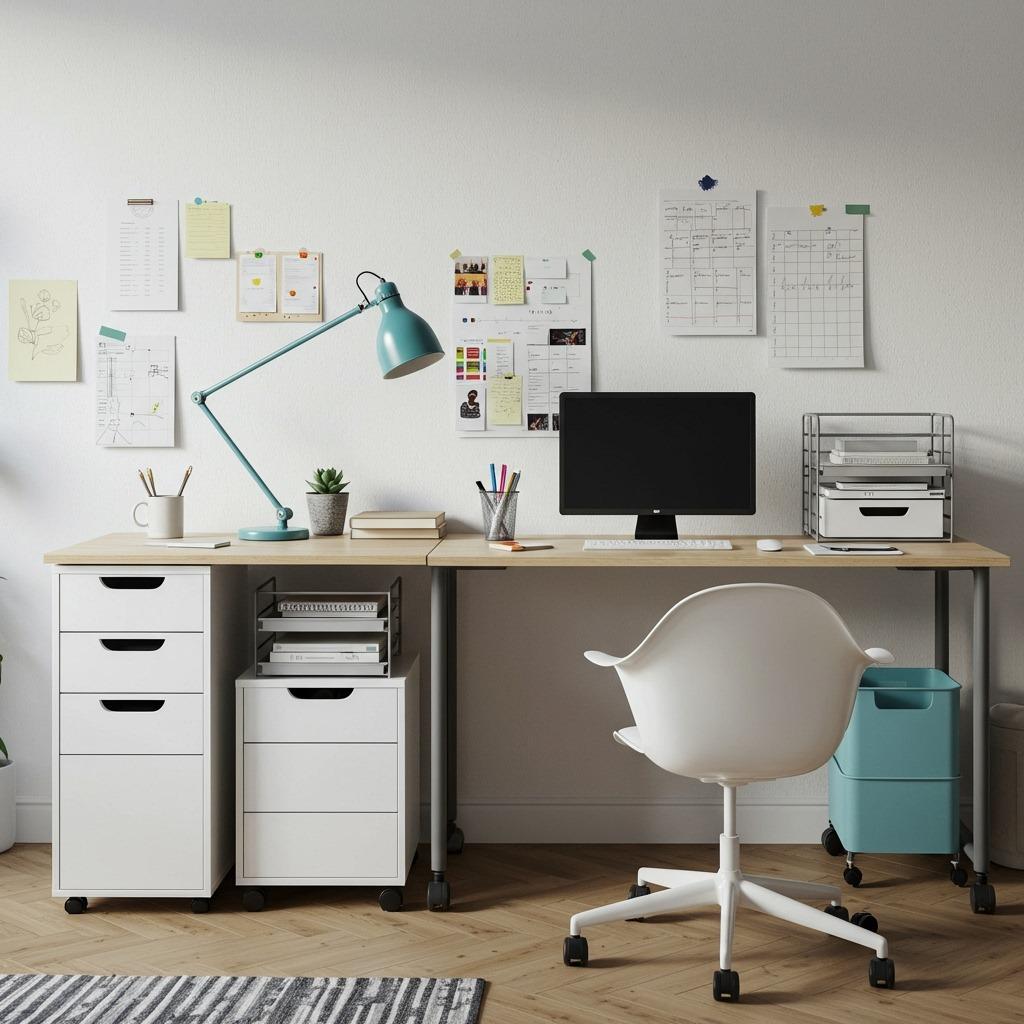
Your work needs will evolve, so designing flexibility into your office saves headaches later. Modular furniture, adjustable shelving, and pieces on wheels give you options to reconfigure as your job changes or you simply want a refresh. What works perfectly now might feel stale in six months, and that’s okay.
Consider furniture that serves multiple purposes. A storage ottoman provides seating for the occasional guest and hides office supplies. A fold-down desk can disappear when you need the space for other activities. This adaptability is especially valuable in shared spaces where your office needs to coexist with other functions.
Don’t over-commit to permanent solutions unless you’re certain about them. Removable wallpaper, furniture you can easily move or repurpose, and avoiding built-ins gives you room to adjust. Your perfect office might look different than you initially imagined, and staying flexible lets you respond to what actually works rather than being stuck with your first plan.
12. Add Comfort Features for Long Work Sessions
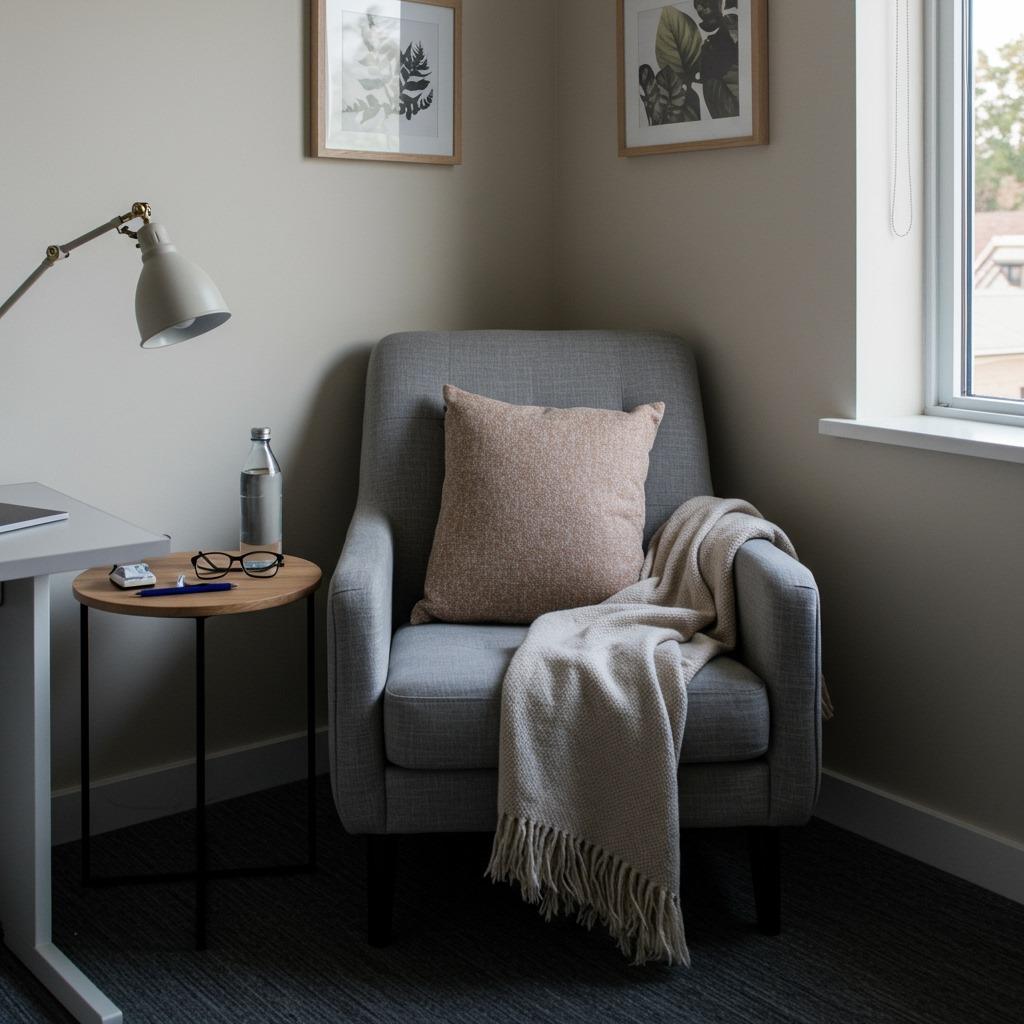
You’re human, not a productivity machine, so build in comfort features that acknowledge this. A small cozy chair or floor cushion gives you somewhere to sit during phone calls or when you
need a change of position. A soft throw blanket makes early morning work sessions or chilly afternoons more bearable.
Keep water and healthy snacks within easy reach so you don’t skip breaks out of laziness. A small electric kettle or coffee setup in your office saves trips to the kitchen, which sounds lazy but actually helps you maintain focus when you’re in a workflow groove. These creature comforts reduce friction and make spending time in your office more pleasant.
Don’t underestimate the power of temperature control. A small fan or space heater lets you adjust your immediate environment without negotiating the thermostat with everyone else in your home. Being physically comfortable directly impacts your ability to concentrate and your overall mood throughout the workday.
13. Incorporate Inspiring Art and Visual Focal Points
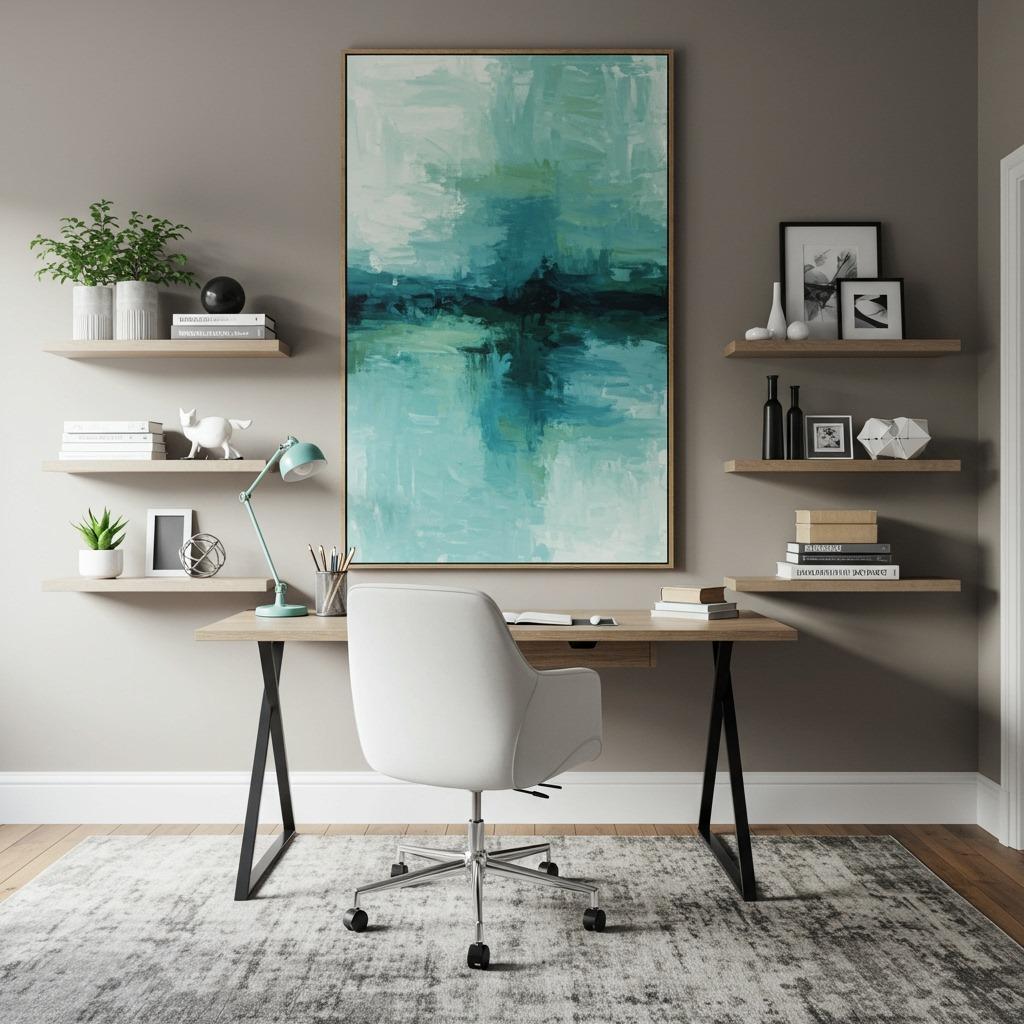
The walls around you affect your mindset more than you might realize. Blank walls can feel sterile and uninspiring, but overwhelming them with too many competing images creates visual chaos. Choose artwork that genuinely moves or motivates you rather than just filling space.
One statement piece often works better than multiple small prints competing for attention. Position art at eye level when seated at your desk, as that’s where you’ll naturally look during thinking breaks. Abstract pieces work well because they’re open to interpretation and don’t demand active attention the way detailed images might.
Photography, prints, or original artwork all have their place depending on your budget and taste. Gallery walls can work if you keep a cohesive theme or color palette. Whatever you choose, make sure it’s something you’ll still appreciate seeing every single day, because you will definitely be seeing it every single day. Similar principles from farmhouse style living room design translate well to creating warm, inspiring office spaces.
14. Design for Video Call Readiness

Like it or not, video calls have become part of most people’s work routine. Designing your office with this in mind saves scrambling to find a presentable background every time you hop on a meeting. Your background doesn’t need to look like a magazine spread, but it should appear intentional and tidy.
Lighting for video calls requires front-facing light sources. A ring light or desk lamp positioned behind your monitor illuminates your face evenly without creating harsh shadows. Natural light from a window in front of or beside you works beautifully during daytime calls, but have backup lighting for evening meetings.
Consider what your camera actually captures and style that zone specifically. Everything outside the camera’s view can be more casual or cluttered if needed, but that visible strip should look pulled together. A few books, a plant, and maybe one decorative object create an interesting background without looking staged.
15. Establish a “Shutdown Routine” Space
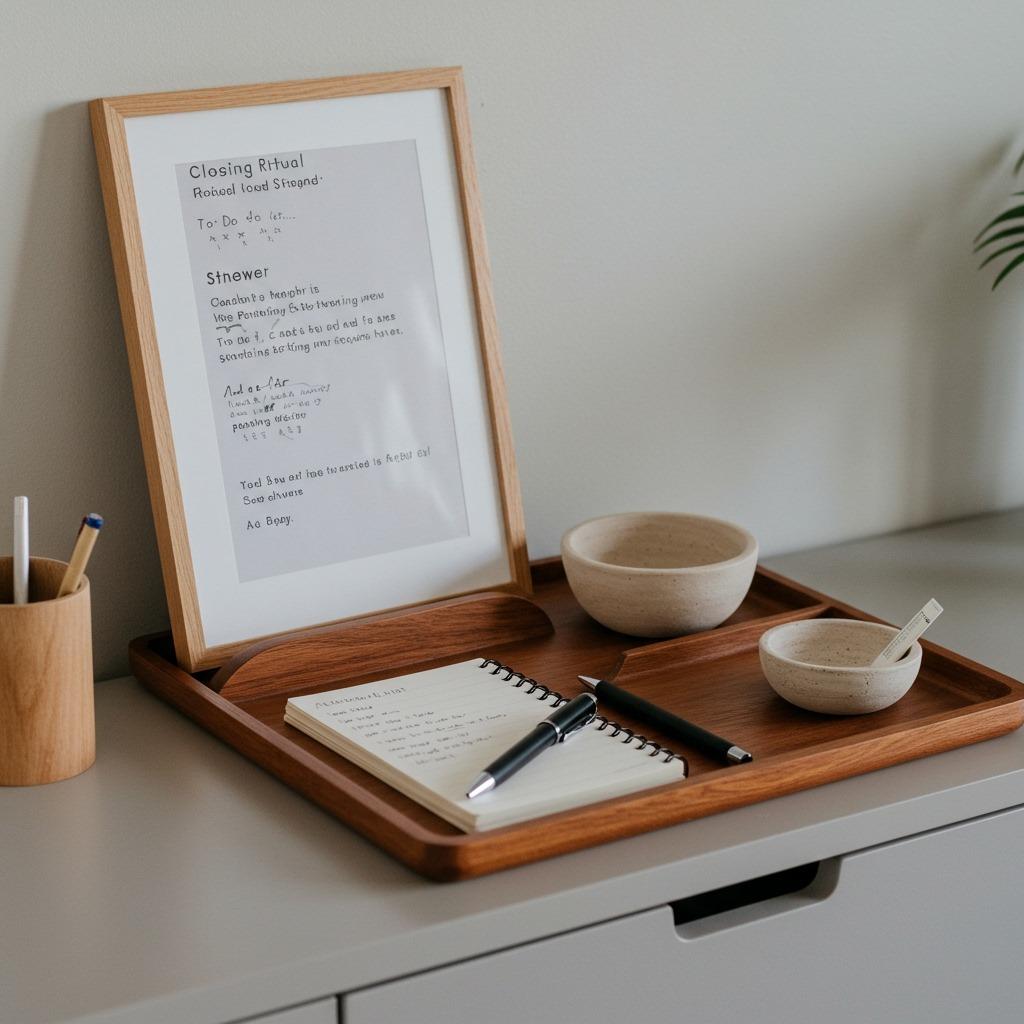
Creating physical rituals around starting and ending your workday helps maintain boundaries when your office is also your home. A dedicated spot for “closing down” your work, whether that’s a tray for tomorrow’s to-do list, a spot where you always place your laptop, or even just a specific place you put your work phone, signals to your brain that the workday is ending.
This might seem overly precious, but these small rituals matter when you don’t have the natural transition of commuting. Writing tomorrow’s priorities, tidying your desk, or even just closing your laptop and turning off your desk lamp becomes your version of leaving the office.
Consider what would help you mentally disconnect from work mode. Some people find that physically leaving the room helps, while others benefit from spending two minutes straightening up so they start fresh the next morning. Whatever works for you, build it into a consistent routine that marks the transition between work and personal time.
Your home office deserves the same thoughtful attention you’d give to any other room in your house. After all, you spend a significant portion of your life there, and the environment genuinely impacts both your productivity and wellbeing. These changes don’t all need to happen at once. Start with what bothers you most about your current setup, whether that’s uncomfortable seating, poor lighting, or visual clutter, and work from there.
A successful home office remodel balances function with comfort, productivity with personality. It’s not about creating an Instagram-perfect space that looks good but doesn’t actually support how you work. The best office is one that adapts to your needs, helps you focus when necessary, and feels pleasant enough that you don’t dread starting your workday. With some thoughtful planning and gradual improvements, you can transform your workspace into somewhere that genuinely supports your best work.

